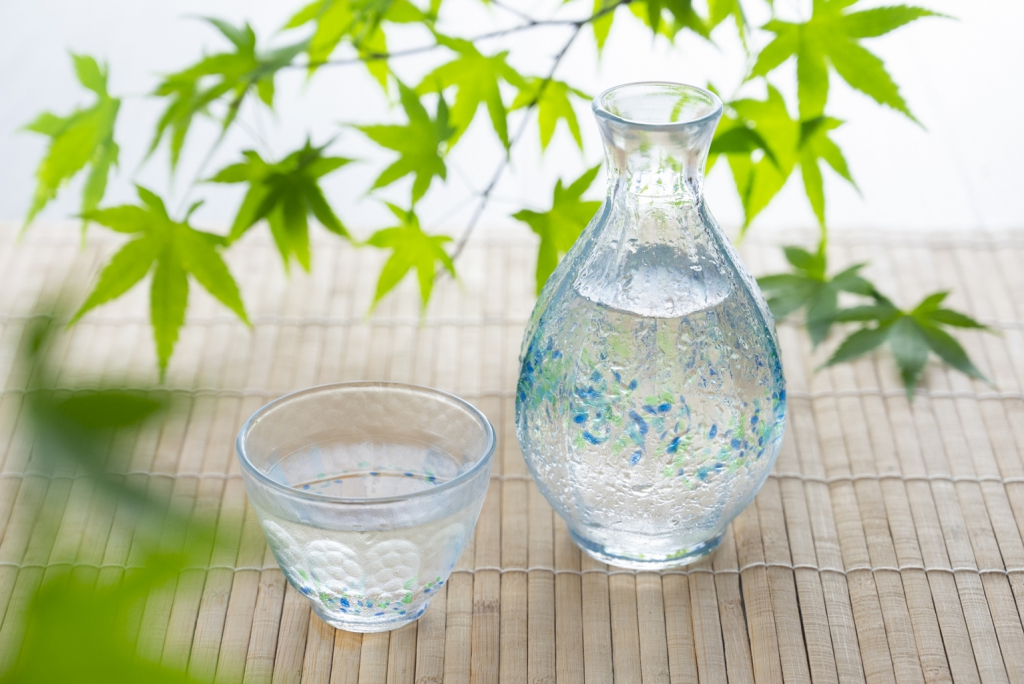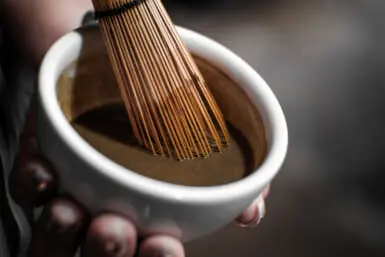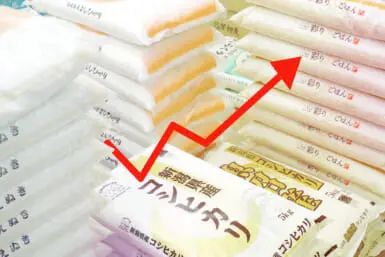From wine and whiskey to soju and mezcal, alcoholic beverages around the world come with a wealth of culture. Japan is no different with more than 1,000 years of history of producing its very own drink, using it in Shinto practices and ceremonies.
In English, the umbrella term for Japanese alcohol is “sake,” though sake in Japanese refers to anything with even the slightest alcohol content. What the word “sake” refers to in English is usually referred to as nihonshu in Japanese.
Much like wine, nihonshu comes in a variety of types and grades, though what most people are drinking abroad is ginjo, revealed Kosuke Kuji, the president of the Japan Ginjo Sake Association. Much more than just being a fun fact, the story of ginjo is an inspiring one.

What Makes Ginjo Different
Nihonshu is made with rice, water and koji, the latter being the active ingredient that triggers the fermentation process. Ginjo doesn’t stray away from this recipe. Its distinct taste comes down to technique. Grain polishing is one common way to classify nihonshu, and ginjo, by definition, is made with highly polished rice.
Brewers of ginjo believe that a more polished rice grain produces a purer end-product. Rice used for cooking is polished at only 10 percent, while rice used for the production of ordinary nihonshu is polished at 30 percent. Rice used when making ginjo, however, is polished at 40 percent. There is even a more luxurious variety called daiginjo, for which the rice is polished at least 50 percent.
Though Japan has a millennium of nihonshu history, the above classification would not have been possible without modern technology. Ginjo has been around for just about 100 years, after the invention of the vertical rice-polishing machine in the early 1930s.
Kuji puts things in perspective, saying “Oda Nobunaga and Tokugawa Ieyasu drank nihonshu, but had never tried ginjo.”
Trying to illustrate the difference between ginjo and other varieties of nihonshu, Kuji continues: “Both tonkotsu ramen and dashi broth are tasty, but they are quite different.” In other words, people can have personal preferences, with some preferring the fruitiness of ginjo. This has greatly contributed to the popularity of ginjo beyond the closed-knit circles of nihonshu-brewing competition.

The Rising Popularity of Ginjo
Ginjo is featured among the other alcoholic beverages that fall under the vague umbrella of “rice wine.” Its complex, fruity taste is often surprising, with hints of pineapple or strawberry discerned at first sip. Yet, the ingredients remain the same: rice, water and koji. Ginjo’s aromas and crisp flavor are why it is recommended to drink it chilled and with no ice or garnishes.
“That is the miracle of ginjo,” says Kuji.
The Japan Ginjo Sake Association president suggests that due to the exploding popularity and significant exports of ginjo, most people are probably drinking ginjo abroad. He estimates there are more non-Japanese people in the world who drink ginjo than Japanese people.

Ginjo Keeps Advancing
Producing ginjo only became possible after brewers embraced technology and innovation, though they stayed true to their values by making quality a top priority.
One example of this is a change in the processing of koji. A key ingredient influencing the flavor and aroma of any nihonshu, koji can grow naturally in different ways. In the context of nihonshu-making it needs to be cultivated and stimulated. This process traditionally involved ‘stressing out’ the yeast through drastic changes in pressure and temperature. Recently, however, brewers have taken a different approach to cultivating koji needed for the production of ginjo, where the mold is selectively bred to be naturally fragrant. “Instead of bullying tactics,” Kuji explains, “the new yeast needs to be treated gently for good results.”

Enjoy Ginjyoshu Fair 2022
The Japan Ginjo Sake Association is all about sharing the greatness of ginjo. Here too, they experiment with new technology and media to reach a border audience. The association regularly hosts free educational live streams with brewing masters, producing and sharing videos on YouTube and, more recently, collaborating with VTubers and manga and anime production companies on the release of limited-edition sake ware.
For a taste and a closer look at the recent initiatives of the Japan Ginjo Sake Association, consider attending their upcoming event. This October, 42 breweries will come together in a single location and present 160 different varieties of ginjo. This is a rare opportunity to taste ginjo in its many forms, all with one all-you-can-drink ticket. For nihonshu connoisseurs or aspiring connoisseurs, it’s also a chance to speak directly to master brewers.
International fans are especially encouraged to tune in to the October 11 live stream schedule to feature guests Masumi Sake’s Keith Norum and sake-expert and founder of Sake World, John Gauntner. Starting at 7:30pm JST, This stream will be free to watch on the Japan Ginjo Sake Association YouTube channel.
For more information on the Ginjyoshu Fair 2022, check out our event listing.
For more information on ginjo, visit the Japan Ginjo Sake Association’s official website or learn more about Kosuke Kuji’s own brewery, Nanbubijin.
Sponsored Post









